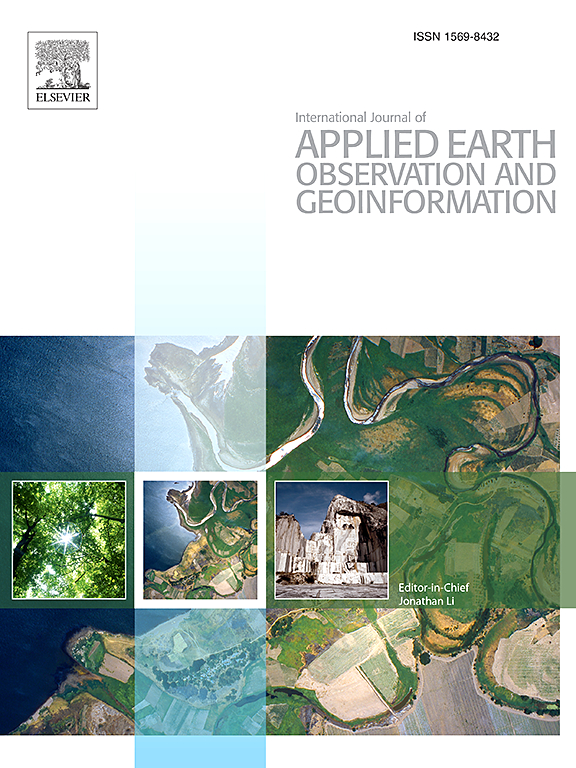Expanding high-resolution sea surface salinity estimation from coastal seas to open oceans through the synergistic use of multi-source data with machine learning
IF 7.6
Q1 REMOTE SENSING
International journal of applied earth observation and geoinformation : ITC journal
Pub Date : 2025-02-15
DOI:10.1016/j.jag.2025.104427
引用次数: 0
Abstract
High-spatiotemporal-resolution sea surface salinity (SSS) estimations are essential for understanding marine phenomena in both coastal seas and open oceans. Although studies have enhanced the resolution of SSS estimations using ocean color (OC) satellite data, the limited variance of OC signals and weak correlation with SSS in open oceans have confined these advancements to coastal seas. To overcome this limitation and broaden the scope of research, a machine learning-based approach is proposed that combines multi-source data. Geostationary Ocean Color Imager (GOCI) remote sensing reflectance (Rrs) was used as an input variable for a multilayer perceptron (MLP) model along with Hybrid Coordinate Ocean Model (HYCOM) SSS and multi-scale ultra-high-resolution sea surface temperature (MURSST) to simulate corrected and gap-filled Soil Moisture Active Passive (SMAP) SSS for East Asia. The high-quality SSS data generated by the proposed approach, with fine spatial (500–m) and temporal (hourly) resolutions, simulated detailed seasonal and spatial variations in SSS across both coastal seas and open oceans. In validation with in situ observations, the MLP model performed better than SMAP, achieving an R2 of 0.80 and an RMSE of 0.92 psu, whereas SMAP achieved an R2 of 0.76 and an RMSE of 1.05 psu. Shapley additive explanations analysis revealed that the contributions of input variables to SSS estimations varied by region and season. In the open ocean, HYCOM SSS and MURSST made significant contributions, compensating for the weaker relationship with Rrs. In coastal areas, Rrs412 and Rrs555 showed a positive correlation with SSS. This integration enabled the detection of high-resolution SSS, including changes driven by cold-water masses near the coastline of the East Sea. The findings of this study advance the generation of high-resolution SSS data for East Asia and also enhance our understanding of the relationship between OC properties and SSS.
求助全文
约1分钟内获得全文
求助全文
来源期刊

International journal of applied earth observation and geoinformation : ITC journal
Global and Planetary Change, Management, Monitoring, Policy and Law, Earth-Surface Processes, Computers in Earth Sciences
CiteScore
12.00
自引率
0.00%
发文量
0
审稿时长
77 days
期刊介绍:
The International Journal of Applied Earth Observation and Geoinformation publishes original papers that utilize earth observation data for natural resource and environmental inventory and management. These data primarily originate from remote sensing platforms, including satellites and aircraft, supplemented by surface and subsurface measurements. Addressing natural resources such as forests, agricultural land, soils, and water, as well as environmental concerns like biodiversity, land degradation, and hazards, the journal explores conceptual and data-driven approaches. It covers geoinformation themes like capturing, databasing, visualization, interpretation, data quality, and spatial uncertainty.
 求助内容:
求助内容: 应助结果提醒方式:
应助结果提醒方式:


